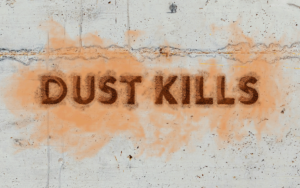 THE Health and Safety Executive (HSE) is launching a nationwide construction site inspection campaign targeted at preventing diseases caused by dust.
THE Health and Safety Executive (HSE) is launching a nationwide construction site inspection campaign targeted at preventing diseases caused by dust.
Supported by the organisation’s Dust Kills campaign, which provides advice on control measures required to prevent exposure to dust, the inspections throughout May, June and July will focus on respiratory risks from exposure to dust.
The HSE said ‘thousands’ of preventable cases of irreversible lung disease arise each year in the construction industry due to past exposure to dust at work. These diseases can have a life-changing impact or even result in an early death.
HSE’s chief inspector of construction, Michael Thomas, said, “Every year we see construction workers die from diseases caused or made worse by their work. This is unacceptable in the 21st century, when occupational lung disease is preventable. We are urging employers and workers to take the necessary precautions today to protect their long-term lung health, to avoid them and their families suffering from the devastating impact that can result.”
Starting on May 15, the inspections will focus on dust control, checking employers and workers know the risks, plan their work, and are using the right controls. Inspectors will be checking the control measures in place to protect workers from inhaling dusts including silica and wood dust. They will also seek assurances that asbestos containing materials have been identified and removed or managed where necessary.
HSE said the primary aim of the initiative is to ensure workers’ health is being protected. However, if safety risks or other areas of concern are identified, inspectors will take the ‘necessary action’ to deal with them.
Michael Thomas added, “Our inspectors will visit a range of construction sites to check businesses are taking the necessary action to ensure their workers’ long-term respiratory health is being protected. Through engaging with those on site, we can make sure they have considered the job from start to finish, have considered the risks at each stage, and are managing the risks with effective measures in line with the broad hierarchy of control options such as water suppression, extraction, and as a last resort Respiratory Protective Equipment (RPE).”








